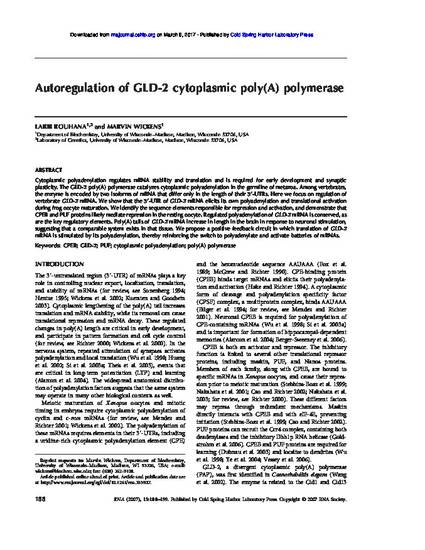
Cytoplasmic polyadenylation regulates mRNA stability and translation and is required for early development and synaptic plasticity. The GLD-2 poly(A) polymerase catalyzes cytoplasmic polyadenylation in the germline of metazoa. Among vertebrates, the enzyme is encoded by two isoforms of mRNA that differ only in the length of their 3′-UTRs. Here we focus on regulation of vertebrateGLD-2 mRNA. We show that the 3′-UTR of GLD-2 mRNA elicits its own polyadenylation and translational activation during frog oocyte maturation. We identify the sequence elements responsible for repression and activation, and demonstrate that CPEB and PUF proteins likely mediate repression in the resting oocyte. Regulated polyadenylation of GLD-2 mRNA is conserved, as are the key regulatory elements. Poly(A) tails of GLD-2 mRNA increase in length in the brain in response to neuronal stimulation, suggesting that a comparable system exists in that tissue. We propose a positive feedback circuit in which translation of GLD-2 mRNA is stimulated by its polyadenylation, thereby reinforcing the switch to polyadenylate and activate batteries of mRNAs.
Available at: http://works.bepress.com/labib_rouhana/5/

Published under the Creative Commons Attribution-Non-Commercial 4.0 International License (CC-BY-NC), http://creativecommons.org/licenses/by-nc/4.0/.